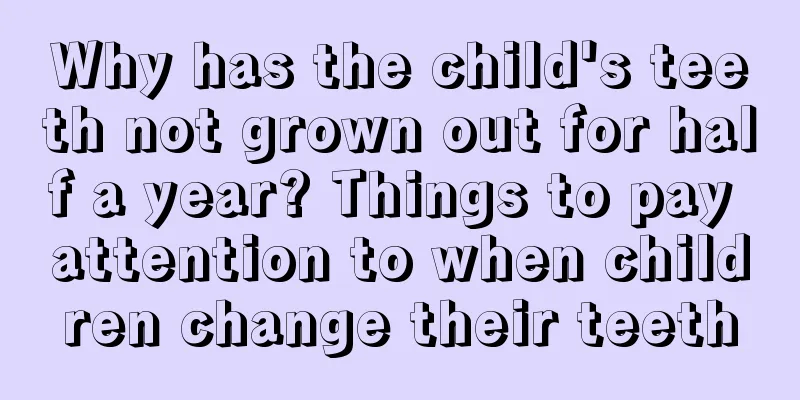What should I do if my child is left-handed? Does my child need to be corrected?

|
There are always some people around us who are different from others. For example, left-handed people. When you see someone holding chopsticks with his left hand, do you think it is strange? Is it good to be left-handed? What are the pros and cons of having a left-handed child?We are often eager to correct left-handed children due to social, cultural, psychological and environmental influences. It should be admitted that left-handed people do encounter some inconveniences in daily life, because most people use their right hands, so most daily necessities and facilities are designed for right-handed people. Modern medical research has proven that the right hemisphere of the left-handed person's brain is dominant, and the function of the right hemisphere of the brain focuses on emotions, intuition, and artistic thinking, so they are more likely to suffer emotional setbacks and various psychological problems. Left-handed people are more likely to suffer from autoimmune diseases, such as diabetes, rheumatoid arthritis, myasthenia gravis, etc. According to research, left-handed people attempt suicide three times more than ordinary people, and are more likely to suffer various casualties. Some scholars have conducted a survey on this and found that in sports injuries, left-handed people are 20% higher than right-handed people; in family accidental injuries, left-handed people are 49% higher than ordinary people; among people who drive cars and get into traffic accidents, left-handed people are 85% more likely than ordinary people. It seems that parents should remind left-handed children to be more careful than ordinary people when engaging in various activities, and they also need to pay more attention. On the other hand, left-handed people also have their own advantages. They have the ability to fully utilize the left and right areas of the brain, which makes them superior in many fields. Left-handed people are good at intuitive thinking and have artistic talent. In competitive sports that require high neural response, left-handed people can take advantage of their right brain "nerve short circuit" to quickly attack the opponent and win by surprise. Especially in the field of mathematics, left-handed people are more eye-catching. According to a study by scholars at Johns Hopkins University in the United States, among children with mathematical talent, left-handed people are almost twice as many as ordinary people. Are left-handed babies more clumsy than right-handed babies?Wrong, wrong, wrong! Don't use your clumsy left hand to draw this conclusion, okay? Although there are studies that have concluded that left-handed people are more likely to have accidents than right-handed people, this is not because left-handed people are clumsy or weird, but because the world revolves around right-handed people! The emergency brake pedal is a bit far for left-handed people. Therefore, left-handed babies may look relatively clumsy because they have to adapt to this society designed for right-handed people. The indisputable fact is that right-handed people are much more clumsy when doing things with their left hand than left-handed people are when doing things with their right hand. Are left-handed babies different babies?Left-handed people think differently. The left brain controls the right hand, which is responsible for language, pronunciation, writing, logic, mathematics and science; the right brain controls the left hand, which is responsible for music, art, perception and emotion. The right brain is responsible for abstract thinking, while the left brain is linear thinking. Right-handed people generally have a more rigid brain structure, with the right brain controlling only language and logic, and the left brain controlling only perception and emotion. However, left-handed people have a more flexible brain, which can understand music with the left brain and mathematics with the right brain. Therefore, the corpus callosum (the part of the brain where the two hemispheres communicate) of left-handed people is 11% larger than that of right-handed people. Some people believe that the brain structure of left-handed people may be the product of living in a right-handed society. Growing up in a right-handed environment, left-handed people have more opportunities to exercise their other hand than right-handed people to adapt to various inconveniences. Biomechanical research shows that by exercising the inactive side of the body, the ability of the active side is indeed improved. This is the cross-training effect, because the body's neural network is a synergistic effect of both sides of the body. (So exercising the passive hand is indeed good for development!) Is it necessary to correct left-handedness?In fact, before the age of 1, the left and right brain functions of babies have not yet differentiated, and the left and right hands have not yet been divided into different functions, so babies at this stage often use both hands to hold the bottle and crawl with both hands and feet. After the age of 1, the child does not have a fixed preference for hand when using both hands; at the age of 2, the left and right brains gradually differentiate, and you can vaguely see which hand the child is used to holding things with, which foot to use to move; around the age of 4, it is not until the child is truly determined which hand is dominant. The human brain is divided into two hemispheres. The right hemisphere is responsible for the perception and movement of the left limbs, and the left hemisphere is responsible for the perception and movement of the right limbs. The movement of the hand is related to the activity of the brain, and this connection is not on the same side but on the opposite side. That is, the activity of the right hand promotes the development of the left brain, and the activity of the left hand promotes the development of the right brain. Therefore, whether the child uses the left hand or the right hand, it can promote the development of the brain. However, left-handed children can learn to pick up the ball with their right hand, and right-handed children can learn to pick up the ball with their left hand. You can also use some hands-on games to train the coordination of the child's left and right hands, for example, finger exercises, where the child can move both hands together. If the child can use both his left and right hands flexibly, it is also beneficial to the child's intellectual development, and can promote the development of the left and right cerebral hemispheres at the same time, fully develop the child's intellectual potential, and is more suitable for the needs of modern society. "No. 5 Parenting" (:yuer5h) |
<<: Can pregnant women drink milk tea? What are the harms of drinking milk tea for pregnant women?
>>: Why does a one-year-old baby drool when sleeping? 6 reasons that cannot be ignored
Recommend
Can toothpaste remove makeup? Can I apply toothpaste if I get burned?
It is not recommended to use toothpaste once it h...
Can pregnant women eat rice noodles? Does it have any effect on pregnant women?
Pregnant women can eat rice noodles. Rice noodles...
How to relieve a child's severe cough? Which part should I massage?
Children usually have a weak constitution, so the...
Is it easier to have a daughter if you get pregnant in winter? Is it better to get pregnant in winter or in summer?
Pregnancy is a new baptism for every couple, whic...
What is the reason for a child's repeated fever? Is a child's repeated fever cancer?
In autumn and winter, if you don't pay attent...
3 things you shouldn't do in front of your children
First, don’t quarrel in front of your children, a...
Can a first-born twin have a second child? Can a family with twins have a second child?
Can a first-born twin still have a second child? ...
How long does lochia last after a caesarean section? What should I do if the lochia is not clear after a caesarean section?
Postpartum lochia is a problem that every pregnan...
When does a pregnant woman produce milk? How many months of pregnancy does she have milk?
We all know that there will be milk after pregnan...
The specific steps of IVF The steps of IVF in the hospital
Infertility is not terrible, IVF can help you. Wi...
Can I eat Sanzi during the confinement period? Can I eat Sanzi during the confinement period?
Although all mothers have completed their mission...
What should we do if a newborn is malnourished? The impact of newborn malnutrition
The main reason for newborn malnutrition is impro...
Will baby's birthmarks disappear automatically? Different birthmarks disappear in different ways
Many people have birthmarks. Some birthmarks will...
What services are included in a doula delivery? Does a doula delivery require an episiotomy?
Before giving birth, many mothers heard that the ...
What is a good name for a baby born on Chinese Valentine's Day in 2017? A complete list of baby names born on Chinese Valentine's Day in 2017
What is a good name for a baby born on Chinese Va...









